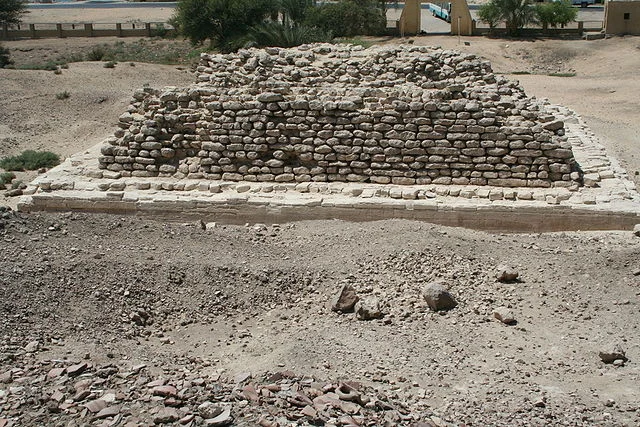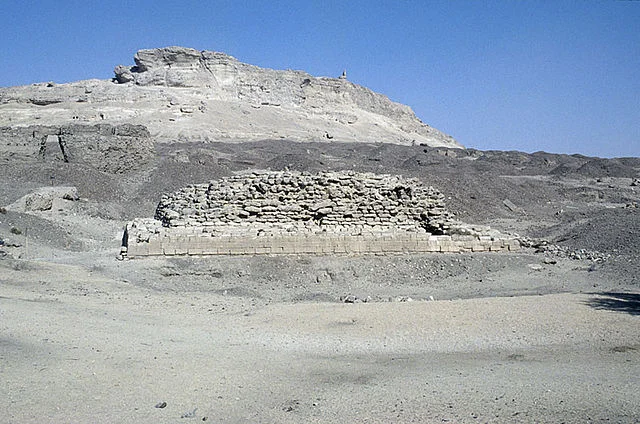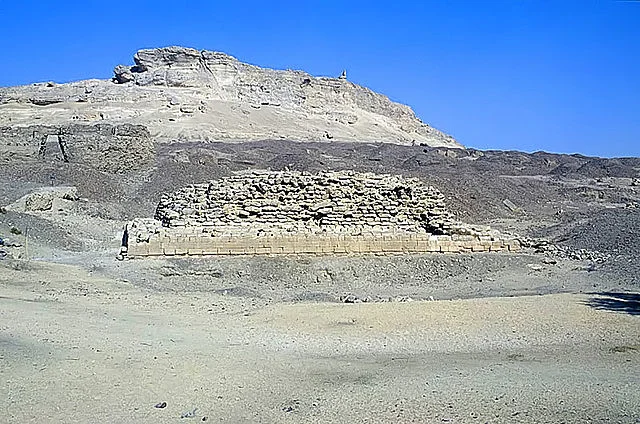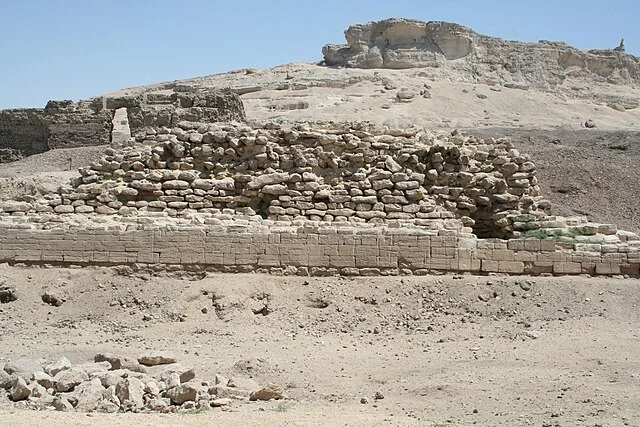The Pyramid of Saujet el-Meitin is a significant archaeological site in Egypt. It belongs to the Middle Kingdom period, specifically the 12th Dynasty, around 1991 to 1803 BC. This pyramid is located in the southern region of Egypt, near the site of the ancient city of Thebes.
Get your dose of History via Email
Historical Context

During the Middle Kingdom, Egypt experienced significant political and cultural developments. The Pyramid of Saujet el-Meitin served as a royal tomb. It was built for King Amenemhat II, a notable ruler of the 12th Dynasty. His reign marked a time of prosperity, artistic achievement, and architectural innovation.
Structure and Design

The pyramid itself features a distinct architectural style. It originally stood at approximately 30 meters tall. The base measures about 56 meters on each side. Today, the structure is mostly in ruins, but remnants reveal its construction techniques.
The pyramid was built using local limestone. The outer casing once featured finely polished stones. Unfortunately, much of this casing has eroded over time. Archaeologists believe that the pyramid’s internal chambers contained elaborate burial goods.
Burial Practices

Burial practices during the Middle Kingdom evolved significantly. Kings were buried with various items, including jewelry, tools, and food. These items aimed to support the deceased in the afterlife. In the case of Amenemhat II, scholars suggest that his tomb contained numerous offerings, reflecting his status and wealth.
Archaeological Discoveries
Excavations of the Pyramid of Saujet el-Meitin began in the early 20th century. Archaeologists uncovered several artifacts and fragments of wall paintings. These discoveries provide insights into the art, culture, and daily life of the Middle Kingdom.
The pyramid complex also includes smaller structures and tombs for nobles and officials. These additional tombs highlight the significance of the site for elite burials during this period.
Conclusion
The Pyramid of Saujet el-Meitin represents a vital piece of Egypt’s Middle Kingdom history. It illustrates the architectural advancements and burial customs of the time. Ongoing research and excavation continue to shed light on this important site. As a result, it remains a focus for historians and archaeologists interested in ancient Egyptian civilization.
Source:

